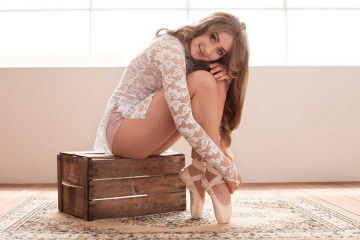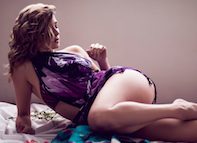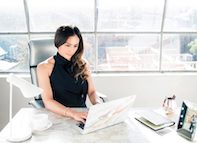The Novice's Guide to Product Photography
If a image deserves a thousand words, a magnificent product photo is worth a thousand internet site sees. Although I do not have data to support that statement (yet), product photography can be exceptionally important to your ecommerce site method.
To reach your target audience participants that choose purchasing online, you additionally need to provide your target market clear, eye-catching pictures of your items.
However product photography isn't as easy as directing and also firing. Also one of the most standard items need the right tools, illumination, and room to create stunning images that sell customers right from the purchase page.
6 Product Photography Tips ( as well as Instances) for Taking Pictures That Sell

1. Don't be afraid to utilize your mobile phone's electronic camera.
This is the component where I'm intended to persuade you to buy a high-end, 50-megapixel (MP) camera with a 100-millimeter screw-on lens. Yet I'm not mosting likely to do that.
If you currently have a camera that fits this description, take advantage of it. However, for numerous types of products, it's entirely acceptable to fire product photos on a mobile phone.
More recent smartphones boast effective camera lenses and also setups that allow you to enhance your shots for the various sorts of light and environments you might fire in.
If you require much more convincing, simply take a look at Apple's Shot On An iPhone project and also the images that have actually resulted from it for many years such as this:
2. Fire from a tripod for photo uniformity.
Prior to explaining tripods, I'm obligated to begin with a primary rule: Do not prop your phone against something durable to aim your lens towards the topic.
It's simply too easy for this makeshift configuration to slide about throughout the shoot and cause disparities in your photos' appearance. If you rest your video camera on, state, a pile of publications, just make sure this setup does not alter over the course of the shoot.
There's no damage in holding your electronic camera on your own when firing simply a few product photos for your ecommerce site. However as your service grows, and you take extra images of even more products, it can be tough to standardize the product's orientation in each photo when firing portable.
To ensure consistency across your items, you'll need a tripod. As well as luckily, buying one isn't constantly the huge, industrial-sized investment it made use of to be.
Here are two sorts of tripods to take into consideration.
Typical vs. Flexible
This is a tradition tripod-- there are conventional tripods readily available for both video cameras and also smartphones.
A flexible tripod can be adjusted in a variety of means. You can flex its legs and place it on various surface areas to obtain the angle you require.
Mobile Grasp
There's frequently a screw on the top of your tripod which affixes to your cam to hold it in position. The bottom of the majority of professional-grade cams has a screw hole just for this function, yet smart devices can make use of the following adapter:
The adapter grips the sides of your smartphone and can screw right into either sort of tripod, allowing you to run the video camera regulates with the phone screen dealing with external and toward you.
Once you figure out which install you'll need, establish it up before your product, as well as think about putting three items of tape on the ground to mark where you would love to maintain each leg of your tripod over the course of the shoot.
3. Choose all-natural light or synthetic light.
Never ignore just how certain kinds of light can enhance (or impede) your product photography. Remember, purchasers get the most effective consider an thing in person, where they can see every little thing they need to prior to buying. The right lighting arrangement helps you expose those crucial decision-making product attributes when all web site site visitors need to go on is a photo.
A solitary illumination arrangement might not help every product-- a lights arrangement that helps some products might damage the appearance of others.
There are two types of light you can choose as your major source of light: natural and also artificial light.
All-natural Light
All-natural light refers to sunshine-- easy as that. It's likewise known as "soft light" because the sunlight casts a bigger, softer range of light than, state, a light beaming straight on the product. Ecommerce product shots flourish in natural light if:
The product is shot outside or implied to be utilized outside.
The product is utilized by, worn on, or shot with a individual ( individuals often tend to look far better in natural light).You're attempting to highlight the product's surroundings, as opposed to details attributes of the product.
Below's an example of a shot making use of natural light:
Synthetic Light
Synthetic light includes candle lights, fire, and a lot more frequently, light bulbs. It's additionally referred to as " difficult light" due to the fact that it creates a smaller but much more focused light surface area. This kind of light satisfies products with physical details that need to be highlighted to thrill an on-line shopper.
As a basic rule, adhere to just one type of light per photo-- all-natural or man-made. Including all-natural light to an unnaturally lit photo can soften a product that's indicated to festinate, as well as including artificial light to a normally lit photo can develop a product that's implied to look soft. You don't wish to get in your own way.
4. Load or bounce your light to soften shadows.
Whether you use natural light or artificial light, you'll need to lessen the shadows that any kind of prospective hard light casts on the contrary end of a product.
There are three means to do this:
Fill up Light
Include an additional, less-intense source of light to supplement your primary light. This added light is called your fill light as well as is used as a counterbalance to soften the all-natural shadow your major light creates behind an object.
To do this, position your fill light contrary your major light so your product sits in between both source of lights.
Flashbulb Bounce Card
A bounce card, or reflector card, is a tiny card that " shows" or " jumps" the primary light back onto the surface area underneath your product to minimize shadows.
Some bounce cards affix to the flashbulb of a specialist video camera lens to diffuse the light from the video camera's flash. This card sprinkles a softer light onto the subject from over your set-- instead of straight at it-- so you do not have long darkness trail behind the item you're shooting.
Standalone Bounce Card
If you're firing from a smart device, a flashbulb bounce card isn't an choice, considering that you don't have a physical flash you can affix it to. Rather, make your own standalone bounce card positioned opposite your major light.
For beginners to product photography, this bounce card can efficiently replace your fill light, which counters the tough light from the video camera flash or light that's encountering towards the front of your product.
5. Make use of a move or portrait setting to emphasize the product.
There isn't one ideal way to position your product, lights, and jump cards-- they can transform considerably relying on your history. But don't choose a history based upon what's easiest to create. Backgrounds need to look like just how you want your buyers to perceive your product when watching it online.
Consider first whether you would certainly such as a white background or a extra vibrant, real-world history. There's an easy way to attain every one.
White Background: Move
For white histories, it's not as straightforward as setting up a table versus white drywall. Even smartphone video cameras can pick up little blemishes on a white wall that you wouldn't observe with the nude eye. To capture a excellent white history without any campaign photographer gold coast edges or imperfections, use a move.
A move is a large bendable sheet of paper, whose lower function as the surface beneath your product and after that contours up into a white wall surface behind the product.
On cam, the move's curve is invisible, emphasizing crucial product details and also allowing the item to have all of a website site visitor's focus.
Real-World History: Portrait Setting
Dynamic, real-world backgrounds are really attractive when shooting items that have a specific use or are being designed by a person-- as you saw in the picture of the brief-case earlier in this overview.
But, it's very easy for a real-world history to steal the emphasis of the photo, making it unclear which thing in the photo you're really marketing.
Provide your product deepness as well as emphasis with portrait setting, a picture setting on many professional cameras, and also readily available on many brand-new smart devices. This setting blurs the history so the context of the product is clear but not completing versus the product itself.
Below is a incredibly incredible photo of a HubSpot pen absorbed picture setting on a Google Pixel 2 (I took this picture myself). You can inform the pen sits on a desk with a computer system behind it, however the pen is still the focal point for visitors:
6. Shoot a selection of pictures.
My last ecommerce photography tip to you is to not stop at one photo per product. Equally as your clients look, hold, make use of, as well as also try out goods in a shop, your web site needs to shoot a selection of photos to mimic this very experience.
If you're shooting clothes, for example, record the garment of garments alone-- that is, expanded on a white surface-- in addition to on a mannequin whose color contrasts the color of the product.
Then, for added images, have the clothing modeled on a individual, allowing you to take pictures of the product from the person's different presents as well as angles.
Product Photography Set Up
Next off, allow's summarize what we simply obtained-- here's a listing of fast product photography set-up ideas that you can refer to and share on your group:
• Decide on a electronic camera-- whether that indicates utilizing your mobile phone.

• Select all-natural or artificial lighting-- think of which option is best for your product and setting.
• Determine whether you'll fill up or bounce light.• Select move or picture setting.
• Take numerous different photos to offer your audiences selection.

Get going With Your Product Photography
Do not really feel required to purchase every suggestion and also piece of equipment simultaneously. Apply these product photography pointers slowly to see what makes your store look one of the most nice, as well as alter your technique as your photography chops improve.